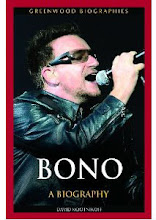
Indonesia is a smorgasbord of cultures laid out over an archipelago encompassing no less than 17,000 islands with approximately 500 languages and dialects and 300 ethnic groups. While "unity in diversity" adorns Indonesia's coat of arms, conflict is never far from the surface.
From a distance, terrorist bombings and the 2005 tsunami has contributed to an image of a country dissolving into chaos. But in fact, the opposite is true: the people, mainly the young, are fighting to keep it together. In a country where 26 is the average age and over 30 percent of the country's 225 million people are under 15, a youthful dynamism is tangible.
 Along with the emergence of an indigenous form of moderate Islam and the messy disentangling of human rights abuses, Indonesian Pop Idol remains huge and condom ads risqué. This is a country that is at least trying to "ride the winds of change", to paraphrase a recent Suzuki motorcycle ad campaign. And as the world's most populous Muslim nation, it behooves the world to take note.
Along with the emergence of an indigenous form of moderate Islam and the messy disentangling of human rights abuses, Indonesian Pop Idol remains huge and condom ads risqué. This is a country that is at least trying to "ride the winds of change", to paraphrase a recent Suzuki motorcycle ad campaign. And as the world's most populous Muslim nation, it behooves the world to take note.Jakarta
Jakarta. "The big durian", as it's called, a durian being a tropical fruit that's hard and prickly on the outside, soft and sweet on the inside. They also have a putrid odor: imagine a dripping sewage tank on a sweltering day. Hotels in this part of the world prohibit guests from bringing this stink bomb onto their premises. Make no mistake - this bulbous, porcupine of a fruit is an acquired taste. But once accustomed to its flavour, the yellow, velvety flesh can prove to be irresistible. Too bad the same can't be said for Jakarta. As the capital of Indonesia, it's a city best sampled in small morsels before venturing beyond to indulge in the feast that is the rest of the country.

Over sixty years ago, on August 17 1945, immediately following Japan's surrender to the allies, Sukarno proclaimed Indonesia's independence. Rather than be a place of veneration as might be expected, the area where he made the declaration has deteriorated into a dilapidated enclosure. Including a statue of Sukarno and his comrade Mohammad Hatta, there is also a memorial to his famous speech outlining Indonesia's state philosophy, Pancasila, or five principles. These include the belief in one god, democracy, civilized humanity, unity and social justice.
When I lived there, I used to walk to the corner of my kampong (neighbourhood) for a bite to eat where warungs - groups of movable food stalls - were set up daily. They resemble barbeques, or hot plates on wheels. For a people whose average annual income is less than US$1000, the stalls provide cheap eats; US$2 dollars will buy a full meal. Young chefs serve up such local delicacies as nasi goring (fried rice), gado-gado (spicy mixed veggies in peanut sauce) and kelapa muda (fresh coconut). I usually ordered the nasi and coconut.

The hodge-podge of patrons sitting out on wooden benches and tables under the trees included bajaj and taxi drivers, local peddlers, office workers and people from the kampong. Some were dressed in t-shirts, others in more formal attire, but no one was in shorts, except me, the notoriously casual foreigner.
"The corner was our testimonial to freedom", sing the Last Poets on Common's "The Corner", and this is what it felt like: a gathering of generations rubbing shoulders and sharing gossip under banyan trees amidst the gritty grime of the inner city.
Not unlike the African Americans Common referred to, these too are a proud people who fought to break the shackles of oppression — Dutch colonialism in this case — to forge their own independence. It was such an embarrassment for the Dutch that only recently did their government formally acknowledge Indonesia's Independence Day. Previously, they had recognized 1949, the date they had allowed Indonesia to become independent. It never much mattered to the people down on the corner: Sukarno and Hatta didn't need anyone's permission to proclaim their freedom.










No comments:
Post a Comment